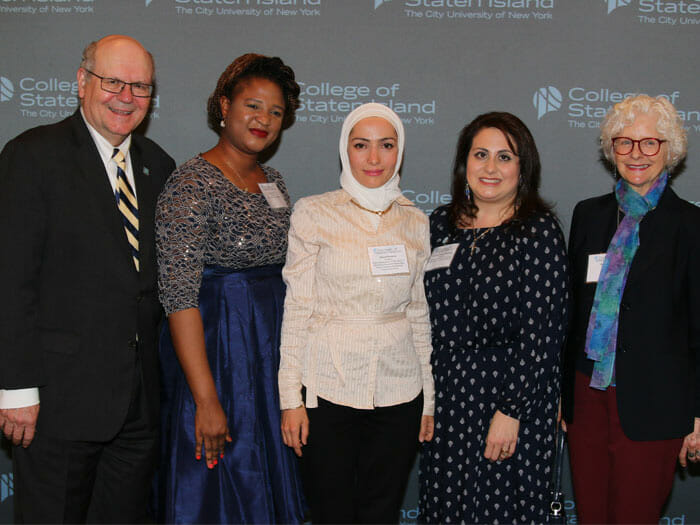New York Governor George Pataki just announced a five-year, $2.3 million grant to the College of Staten Island (CSI) to “bolster and expand high-tech research” as part of a new comprehensive initiative to spur technology-based applied research and economic development across the state.
The grant, funded through the College Applied Research and Technology (CART) program of the New York State Office of Science, Technology, and Academic Research (NYSTAR), is “yet another milestone that recognizes the scientific research accomplishments of our college’s faculty,” noted Marlene Springer, president of CSI.
“CSI scientists contribute to our mission of undergraduate and graduate education while they also successfully compete with scientists at other major research institutions in obtaining significant research grants,” she continued.
Over the past few years, CSI has attracted many prominent faculty members to its chemistry, and engineering science and physics departments who have collectively built an interdisciplinary research program in the area of engineered polymeric materials, according to David Podell, CSI’s provost and vice president for academic affairs.
The CART grant will support the establishment of the Center for Engineered Polymeric Materials, which will further advance the college’s research efforts in polymers and engineered nanomaterials, which are materials one thousand times smaller than the human hair, or one-billionth of a meter.
Dr. Nan-Loh Yang, a CSI chemistry professor and chair of the CUNY Polymer Ph.D. Program, is a senior investigator for the research initiatives of the Center. The projects include studying a variety of nanomaterials and developing processes to inexpensively produce nanomaterials for commercial use.
“Basically, we will be conducting applied research on polymers, which most people recognize as forms of plastic and fibers,” said Dr. Yang, adding that this research plays an integral role in the basics of nanotechnology.
“With this important funding, we will significantly enhance our equipment,” he continued, “and this will benefit students by engaging them in hands-on research and exposing them to industrial activity in our laboratories.”
Students and researchers at the Center will be spurred on by the promise of creating new materials, according to Dr. Yang.
These materials may then go on and benefit society in a variety of ways, for example, by developing batteries with a high energy density that may power mobile phones and other consumer electronics, new fibers to enhance commercial optical communications, and “pollution abatement” resins that absorb harmful pollutants from exhausts.
“By conducting this important research, the Center will not only explore the forefront of nano-tech research, but will also train the next generation of scientists by offering industry-oriented outreach programs for professionals regarding trends and current developments in the field,” commented President Springer.
The Center’s research activity will be overseen by an advisory board of industry leaders and researchers who will work with CSI scientists to identify areas of research, supporting the overarching goal to promote the economy of New York State through collaborative research and development.
Last year CSI was awarded a NYSTAR grant for $2.5 million in support of its CUNY Institute for Macromolecular Assemblies on its Staten Island campus, which is focusing on research in biomedical fields.












